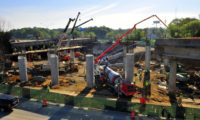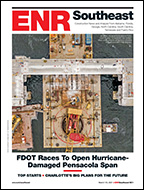McCleary classifies the area as a coastal plain and says the area's proximity to the mouth of the Christina River causes the soil to be "highly organic and very compressible."
"I think we really need to look at our bridge inspection system and make sure [state inspectors] look beyond the limits of the structure," McCleary said.
The state already has inspected 29 other bridges since discovering the tilt on the I-495 bridge, under the directive of DelDOT's Bhatt.
McCleary thinks this incident is cause to look at the way bridges are inspected across the state.
"When this bridge was installed, I'm sure there was a right-of-way fence installed as part of it. When we arrived on the site, that right-of-way fence wasn't here, and somebody had made use of that space underneath our bridge to store materials, so we need to pay attention to that," McCleary said.
Since the discovery of the I-495 bridge's tilt, DelDOT has reinspected 30 bridges with similar geological conditions and plans to inspect all other bridges in the state.
Fault and the fix The 50,000 tons of dirt stored near the bridge could have caused the lateral displacement that cracked the piers' concrete piling caps, rendered at right. Reinforced concrete shafts reaching bedrock approximately 150' down will be tied together by a grade beam, on which the superstructure will rest, below.


